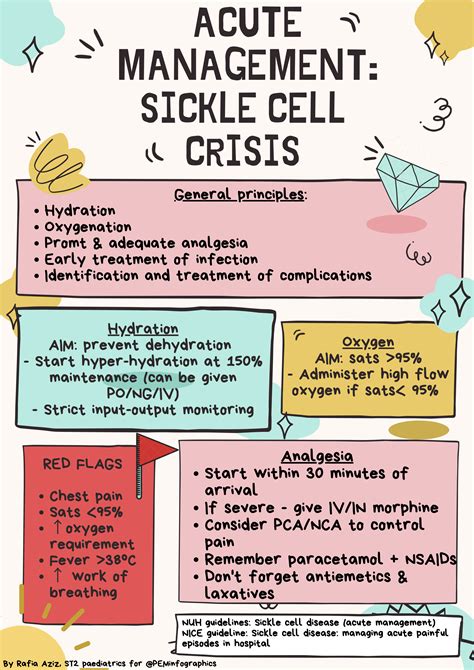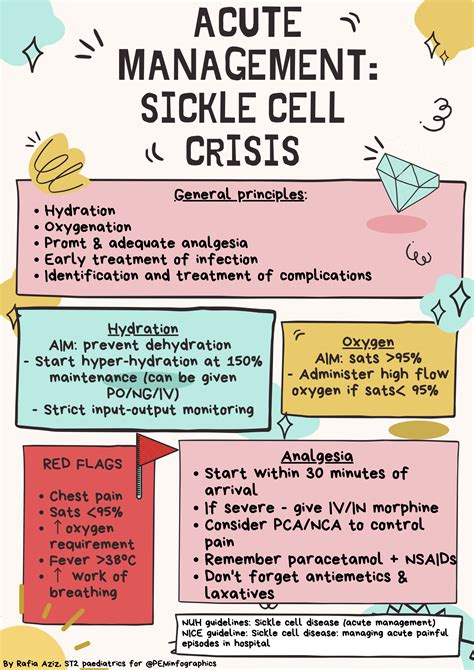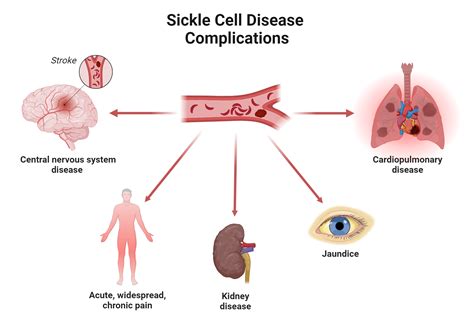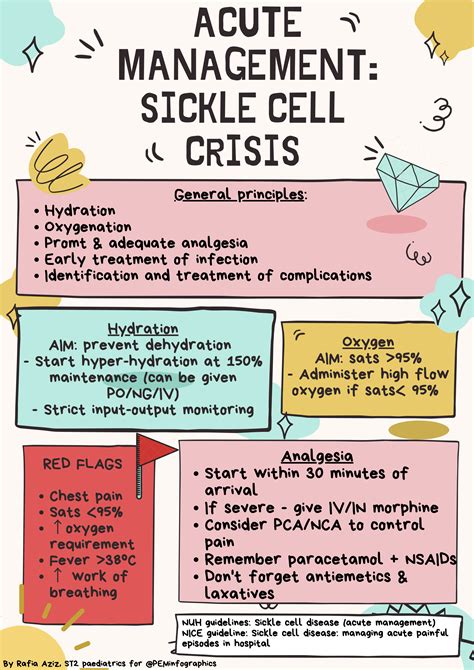Intro
Discover the causes, symptoms, and management of Sickle Cell Crisis, a painful complication of Sickle Cell Disease, and learn about acute chest syndrome, pain episodes, and other related conditions.
Sickle cell disease is a genetic disorder that affects millions of people worldwide, with the majority being of African, Asian, or Mediterranean descent. It is a condition where the red blood cells, which are responsible for carrying oxygen throughout the body, are shaped like a sickle or a crescent moon instead of being round. This abnormal shape makes it difficult for the red blood cells to move through the blood vessels, leading to a range of health problems. One of the most severe complications of sickle cell disease is a sickle cell crisis, which can be life-threatening if not treated promptly. In this article, we will delve into the world of sickle cell crisis, exploring its causes, symptoms, treatment options, and management strategies.
The importance of understanding sickle cell crisis cannot be overstated. It is a medical emergency that requires immediate attention, and delayed treatment can lead to serious consequences, including organ damage, infection, and even death. Despite its severity, sickle cell crisis is often misunderstood, and many people are unaware of its signs and symptoms. By educating ourselves about this condition, we can better support individuals living with sickle cell disease and work towards improving their quality of life. Whether you are a patient, a caregiver, or simply someone interested in learning more about this condition, this article aims to provide you with a comprehensive overview of sickle cell crisis and its management.
Sickle cell disease is a complex condition that affects not only the physical health of an individual but also their emotional and social well-being. The constant fear of experiencing a sickle cell crisis can be overwhelming, and the uncertainty of when it may occur can be debilitating. Furthermore, the lack of awareness and understanding about sickle cell disease can lead to social isolation, stigma, and discrimination. By shedding light on this condition, we hope to raise awareness, promote empathy, and encourage support for those affected by sickle cell disease.
What is a Sickle Cell Crisis?

Types of Sickle Cell Crisis
There are several types of sickle cell crisis, each with its unique characteristics and symptoms. The most common types include: * Vaso-occlusive crisis: This is the most common type of sickle cell crisis, where the abnormal red blood cells get stuck in the small blood vessels, causing a blockage. * Hemolytic crisis: This type of crisis occurs when the red blood cells are destroyed faster than they can be replaced, leading to a severe anemia. * Sequestration crisis: This type of crisis occurs when the abnormal red blood cells get stuck in the spleen, causing it to become enlarged and painful. * Aplastic crisis: This type of crisis occurs when the bone marrow fails to produce new red blood cells, leading to a severe anemia.Symptoms of Sickle Cell Crisis

Diagnosing Sickle Cell Crisis
Diagnosing a sickle cell crisis can be challenging, as the symptoms can be similar to those of other conditions. A diagnosis is typically made based on a combination of physical examination, medical history, and laboratory tests, such as: * Blood tests: To check for anemia, infection, and other abnormalities. * Imaging tests: Such as X-rays, CT scans, or MRI scans to check for tissue damage or organ failure. * Urine tests: To check for kidney damage or infection.Treatment Options for Sickle Cell Crisis

Management Strategies for Sickle Cell Crisis
While treatment options are available, preventing a sickle cell crisis from occurring in the first place is crucial. Management strategies include: * Staying hydrated: Drinking plenty of water to prevent dehydration. * Avoiding triggers: Avoiding factors that can trigger a crisis, such as cold weather, physical stress, or infection. * Getting regular check-ups: Regular health check-ups can help identify potential problems before they become severe. * Taking medications: Taking medications as prescribed to help manage symptoms and prevent crises. * Practicing stress-reducing techniques: Techniques such as meditation, deep breathing, or yoga can help reduce stress and anxiety.Complications of Sickle Cell Crisis

Long-term Management of Sickle Cell Disease
While a sickle cell crisis can be managed with treatment, long-term management of sickle cell disease is crucial to prevent future crises. This includes: * Regular health check-ups: Regular health check-ups can help identify potential problems before they become severe. * Taking medications: Taking medications as prescribed to help manage symptoms and prevent crises. * Practicing healthy lifestyle habits: Practicing healthy lifestyle habits, such as eating a balanced diet, exercising regularly, and getting enough sleep. * Avoiding triggers: Avoiding factors that can trigger a crisis, such as cold weather, physical stress, or infection.Current Research and Future Directions

Conclusion and Final Thoughts
In conclusion, sickle cell crisis is a serious complication of sickle cell disease that requires prompt treatment. By understanding the causes, symptoms, and treatment options, individuals with sickle cell disease can better manage their condition and prevent future crises. It is essential to raise awareness about sickle cell disease and its complications, and to support research into new treatments and therapies. By working together, we can improve the lives of individuals living with sickle cell disease and reduce the risk of sickle cell crises.What is a sickle cell crisis?
+A sickle cell crisis is a painful episode that occurs when the abnormal red blood cells in individuals with sickle cell disease get stuck in the small blood vessels, causing a blockage.
What are the symptoms of a sickle cell crisis?
+The symptoms of a sickle cell crisis can vary from person to person, but common symptoms include severe pain, swelling, inflammation, fever, and fatigue.
How is a sickle cell crisis treated?
+The treatment for a sickle cell crisis depends on the severity of the symptoms and the underlying cause of the crisis, but common treatment options include pain management, fluid replacement, oxygen therapy, blood transfusions, and antibiotics.
Can a sickle cell crisis be prevented?
+While a sickle cell crisis cannot be completely prevented, management strategies such as staying hydrated, avoiding triggers, getting regular check-ups, taking medications, and practicing stress-reducing techniques can help reduce the risk of a crisis.
What are the long-term complications of sickle cell disease?
+The long-term complications of sickle cell disease can include organ damage, infection, stroke, and pulmonary embolism, which can be life-threatening if left untreated.
